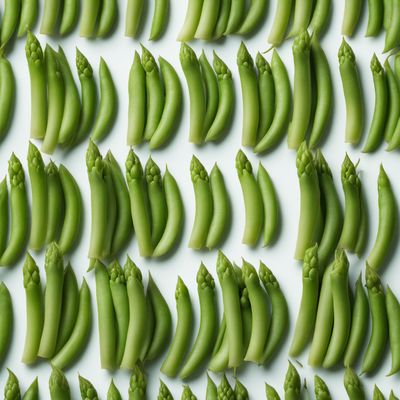
Ingredient
Mung beans (with pods)
The Versatile Green Gem
Mung beans are small, oval-shaped legumes with a vibrant green color and a mild, nutty flavor. They have a tender yet slightly crunchy texture, making them a delightful addition to salads, stir-fries, soups, and curries. When cooked, the pods become tender and add a subtle sweetness to dishes.
Origins and history
Mung beans have been cultivated for thousands of years in Asia, particularly in India and China. They hold great cultural significance in these regions and are often used in traditional dishes like dal and sprouts. Mung beans are also believed to have medicinal properties and are commonly used in Ayurvedic practices.
Nutritional information
Mung beans are a nutritional powerhouse, packed with protein, fiber, vitamins, and minerals. They are low in calories and fat, making them an excellent choice for those seeking a healthy diet. Additionally, mung beans are a good source of antioxidants and can contribute to overall well-being.
Allergens
Mung beans are generally safe for consumption and do not pose significant allergenic risks. However, individuals with legume allergies should exercise caution and consult a healthcare professional if unsure.
How to select
When selecting mung beans with pods, look for bright green, plump pods that are free from blemishes or discoloration. The pods should feel firm and snap easily when bent. Avoid pods that are wilted or have moldy spots.
Storage recommendations
To maintain the freshness of mung beans, store them in an airtight container in a cool, dry place. Avoid exposure to moisture, as it can cause the beans to spoil. Properly stored mung beans can last for up to a year.
How to produce
Mung beans can be easily grown at home by soaking the seeds overnight and then planting them in well-drained soil. They require regular watering and prefer warm temperatures. With proper care, you can enjoy a fresh supply of mung beans right from your garden.
Preparation tips
To prepare mung beans with pods, simply remove the beans from the pods and rinse them thoroughly. They can be boiled, steamed, stir-fried, or added to soups and stews. Mung bean sprouts are also a popular choice for salads and sandwiches. Additionally, mung beans can be ground into flour and used in baking or as a thickening agent in sauces and gravies.
Culinary uses
Mung beans are widely used in Asian cuisines, particularly in Indian, Chinese, and Southeast Asian dishes. They are commonly used in soups, curries, stir-fries, salads, and desserts. Mung bean sprouts are a popular ingredient in Asian salads and stir-fried dishes. In Indian cuisine, mung beans are often used to make dal, a flavorful lentil soup.
Availability
Mung beans are commonly available in Asian grocery stores and supermarkets worldwide. They are also cultivated in various countries, including India, China, Thailand, Vietnam, and the United States.
More ingredients from this category » Browse all

Monantha vetches (with pods)
The Podded Delight

Azuki beans (with pods)
The Versatile Azuki: A Nutrient-Packed Legume with a Crunch

Mat bean (young pods)
The Green Gems of Legumes

Lablab beans (with pods)
The Versatile and Nutritious Lablab Beans: A Pod of Health and Flavor

Ervils (with pods)
The Versatile Legume: Ervils

Soyabeans (with pods)
The Mighty Legume: Exploring Soyabeans (with Pods)

Black eyed peas (with pods)
The Versatile Delight: Exploring the World of Black Eyed Peas with Pods

Slicing bean (young pods)
The Versatile Delight: Exploring the World of Slicing Beans

Rice beans (with pods)
The Versatile Delight: Exploring Rice Beans with Pods

Goa bean (young pods)
The Green Delight: Exploring the Versatility of Goa Bean Pods

Guar beans (with pods)
The Versatile Guar Bean: A Nutrient-Rich Pod of Possibilities

Black gram (young pods)
The Green Delicacy: Black Gram Young Pods
